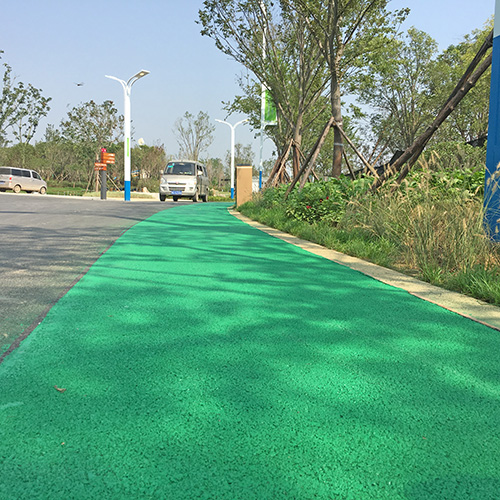Colored Anti-Slip Pavement: Things You Might Not Know
1. Origin and Development
The concept of colored anti-slip pavement originated in the late 20th century. During this period, European countries began applying specialized colored surfacing materials with anti-slip properties to roads and underground parking lots to enhance driving safety. As technology advanced and materials improved, colored anti-slip pavement gradually became a common solution for asphalt surfaces. It is now widely used in public roads, industrial zones, schools, and other areas.

2. Materials
The primary materials used in colored anti-slip pavement include polymer resins such as polyurethane, rubber, and silicone resin. These materials offer excellent wear resistance, corrosion resistance, and high-temperature tolerance, ensuring the pavement's stability and longevity. Additionally, the pigments used must possess strong weather resistance, UV resistance, and chemical corrosion resistance to maintain the pavement's color consistency and anti-slip performance over time.
3. Construction Processes
Colored anti-slip pavement is primarily installed using two methods: hot press molding and cold application.
Hot Press Molding: This high-pressure, high-temperature process involves melting the colored anti-slip material and then pressing it into shape. It results in a surface with high hardness and excellent durability.
Cold Application: This method uses specialized coatings brushed or sprayed onto the existing surface. It offers advantages like ease of application, fast drying times, and a wide range of color options.


